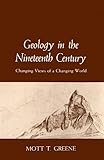Geology in the Nineteenth Century : Changing Views of a Changing World / Mott T. Greene.
Material type: TextSeries: Cornell History of SciencePublisher: Ithaca, NY : Cornell University Press, [2017]Copyright date: ©1985Description: 1 online resource (328 p.)Content type:
TextSeries: Cornell History of SciencePublisher: Ithaca, NY : Cornell University Press, [2017]Copyright date: ©1985Description: 1 online resource (328 p.)Content type: - 9781501704741
- 550 23
- QE11
- online - DeGruyter
| Item type | Current library | Call number | URL | Status | Notes | Barcode | |
|---|---|---|---|---|---|---|---|
 eBook
eBook
|
Biblioteca "Angelicum" Pont. Univ. S.Tommaso d'Aquino Nuvola online | online - DeGruyter (Browse shelf(Opens below)) | Online access | Not for loan (Accesso limitato) | Accesso per gli utenti autorizzati / Access for authorized users | (dgr)9781501704741 |
Browsing Biblioteca "Angelicum" Pont. Univ. S.Tommaso d'Aquino shelves, Shelving location: Nuvola online Close shelf browser (Hides shelf browser)

|

|

|

|

|

|

|
||
| online - DeGruyter Eating Beauty : The Eucharist and the Spiritual Arts of the Middle Ages / | online - DeGruyter Summerfolk : A History of the Dacha, 1710–2000 / | online - DeGruyter Ikki : Social Conflict and Political Protest in Early Modern Japan / | online - DeGruyter Geology in the Nineteenth Century : Changing Views of a Changing World / | online - DeGruyter Governing Academia : Who is in Charge at the Modern University? / | online - DeGruyter Red Brethren : The Brothertown and Stockbridge Indians and the Problem of Race in Early America / | online - DeGruyter Juki Girls, Good Girls : Gender and Cultural Politics in Sri Lanka's Global Garment Industry / |
Frontmatter -- Foreword -- Contents -- Illustrations -- Preface -- Chapter 1. Hutton and Werner: First Principles -- Chapter 2. The Convergence of Geognosy and Geology, 1802 -1818 -- Chapter 3. Elie de Beaumont and the First Global Tectonics -- Chapter 4. The Origin of Mountain Ranges : European Debate, 1830 - 1874 -- Chapter 5. The Debate in North America, 1840 - 1873 -- Chapter 6. The Problem of the Alps and a Solution : Eduard Suess, 1875 -- Chapter 7. The Face of the Earth: Eduard Suess and the Second Global Tectonics -- Chapter 8. The Nappe Theory in the Alps : Tectonics over Physics, 1878 - 1903 -- Chapter 9. New Orogenic Theory and Intercontinental Correlation -- Chapter 10. The Decline of the Contraction Theory : The Challenge from Geophysics , 1870 - 1909 -- Chapter 11. Thomas C. Chamberlin and the Third Global Tectonics -- Chapter 12. Radioactivity, Continental Drift, and the Fourth Global Tectonics , 1908 - 1912 -- Epilogue -- Glossary -- Bibliography -- Index
restricted access online access with authorization star
http://purl.org/coar/access_right/c_16ec
In this clear and comprehensive introduction to developments in geological theory during the nineteenth century, Mott T. Greene asserts that the standard accounts of nineteenth-century geology, which dwell on the work of Anglo-American scientists, have obscured the important contributions of Continental geologists; he balances this traditional emphasis with a close study of the innovations of the French, German, Austro-Hungarian, and Swiss geologists whose comprehensive theory of earth history actually dominated geological thought of the time. Greene's account of the Continental scientists places the history of geology in a new light: it demonstrates that scientific interest in the late nineteenth century shifted from uniform and steady processes to periodic and cyclic events—rather than the other way around, as the Anglo-American view has represented it. He also puts continental drift theory in its context, showing that it was not a revolutionary idea but one that emerged naturally from the Continental geologists' foremost subject of study-the origin of mountains, oceans, and continents. A careful inquiry into the nature of geology as a field poised between natural history and physical science, Geology in the Nineteenth Century will interest students and scholars of geology, geophysics, and geography as well as intellectual historians and historians of science.
Mode of access: Internet via World Wide Web.
In English.
Description based on online resource; title from PDF title page (publisher's Web site, viewed 02. Mrz 2022)


